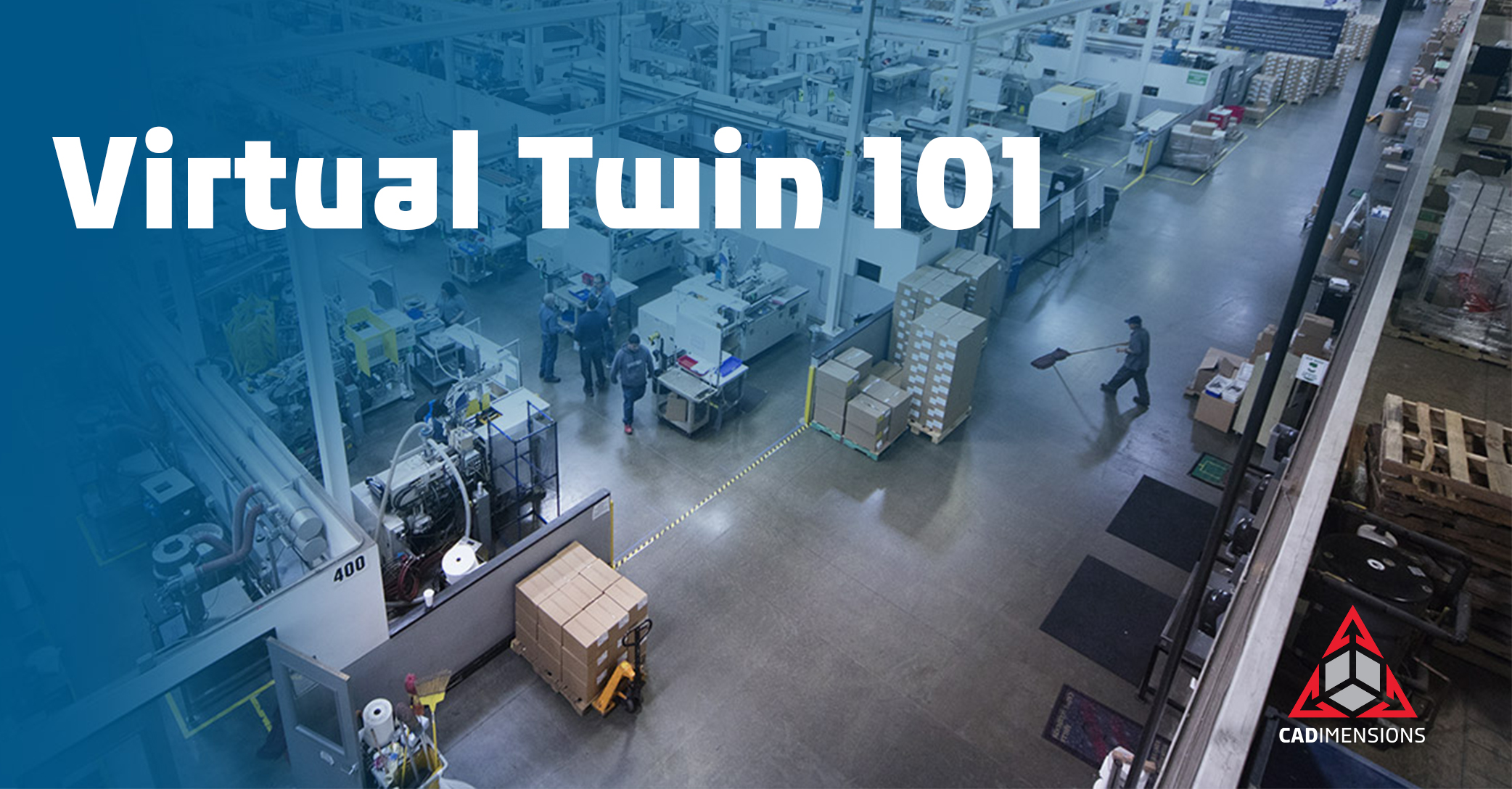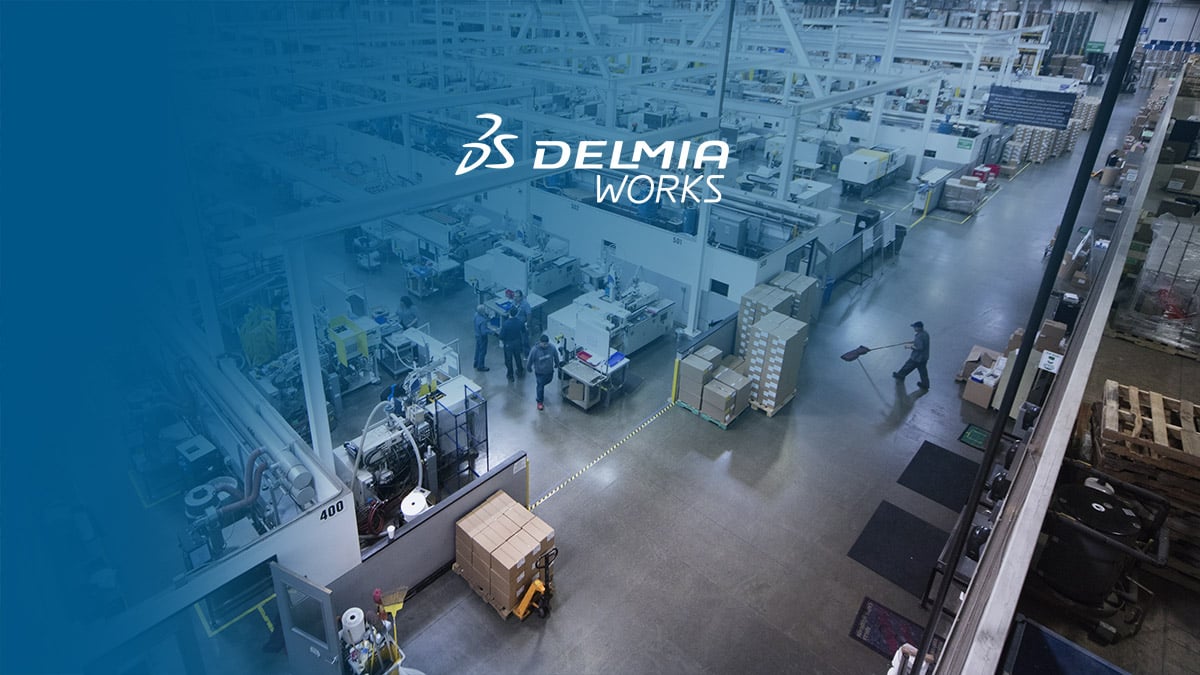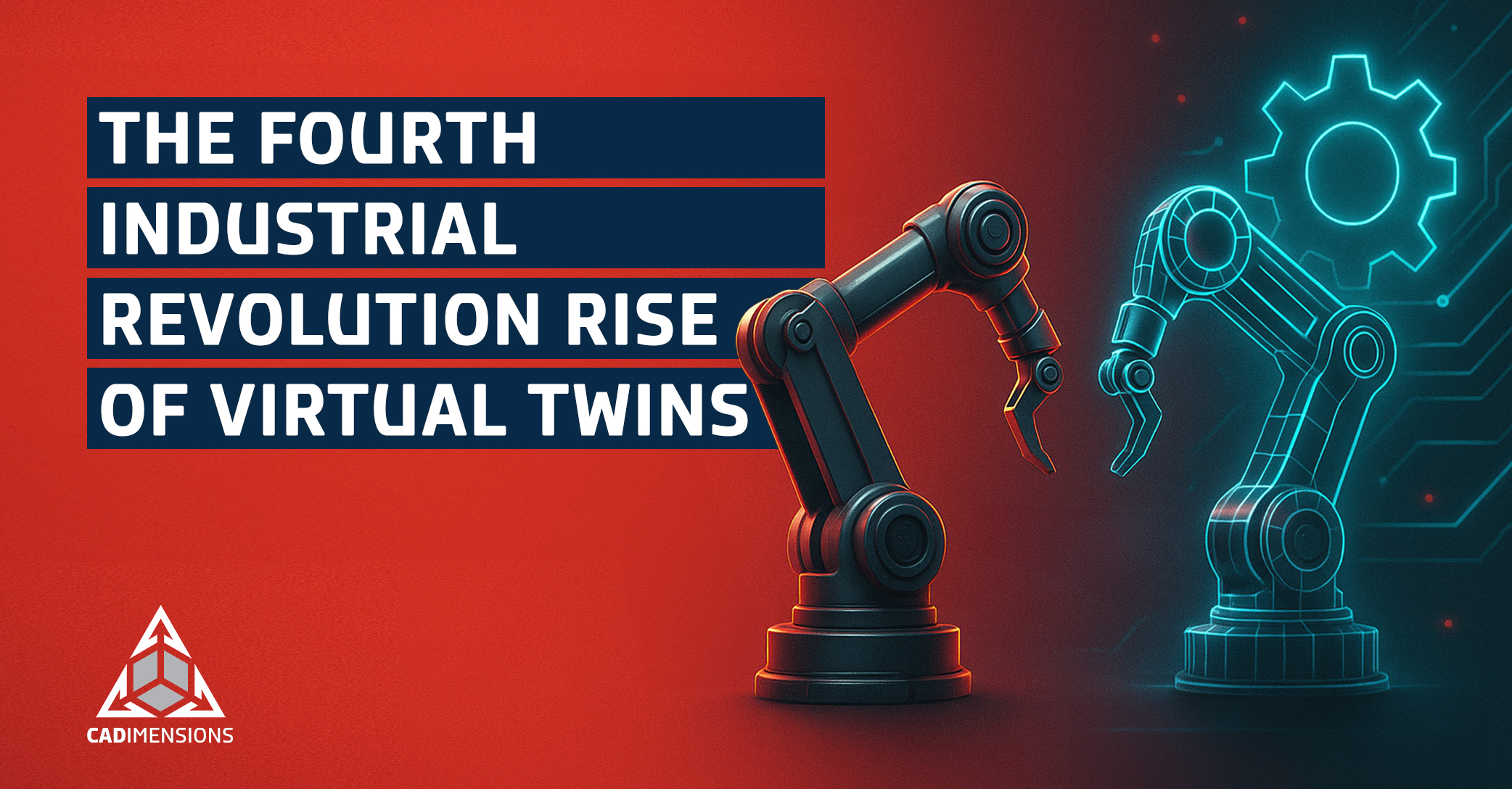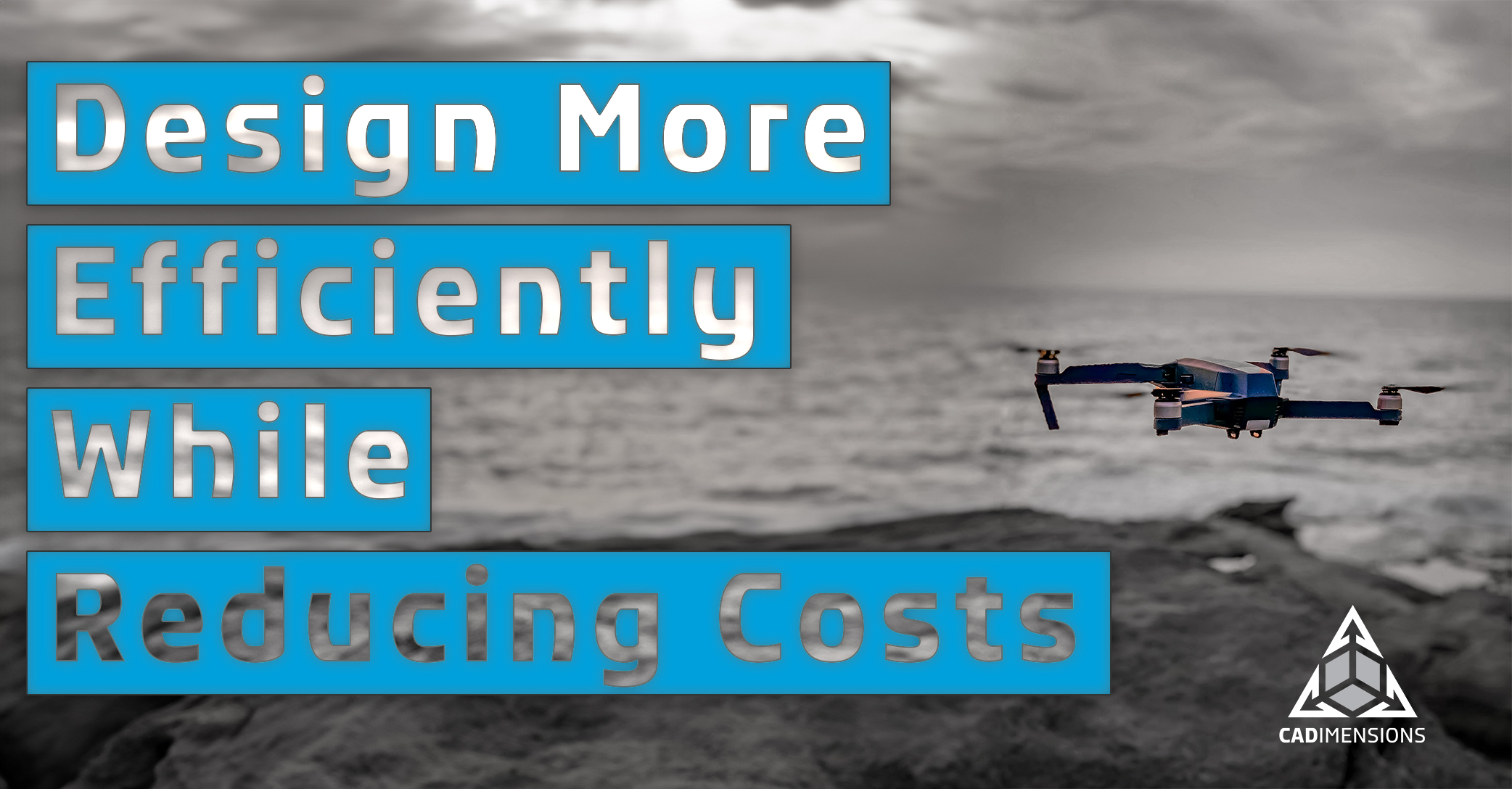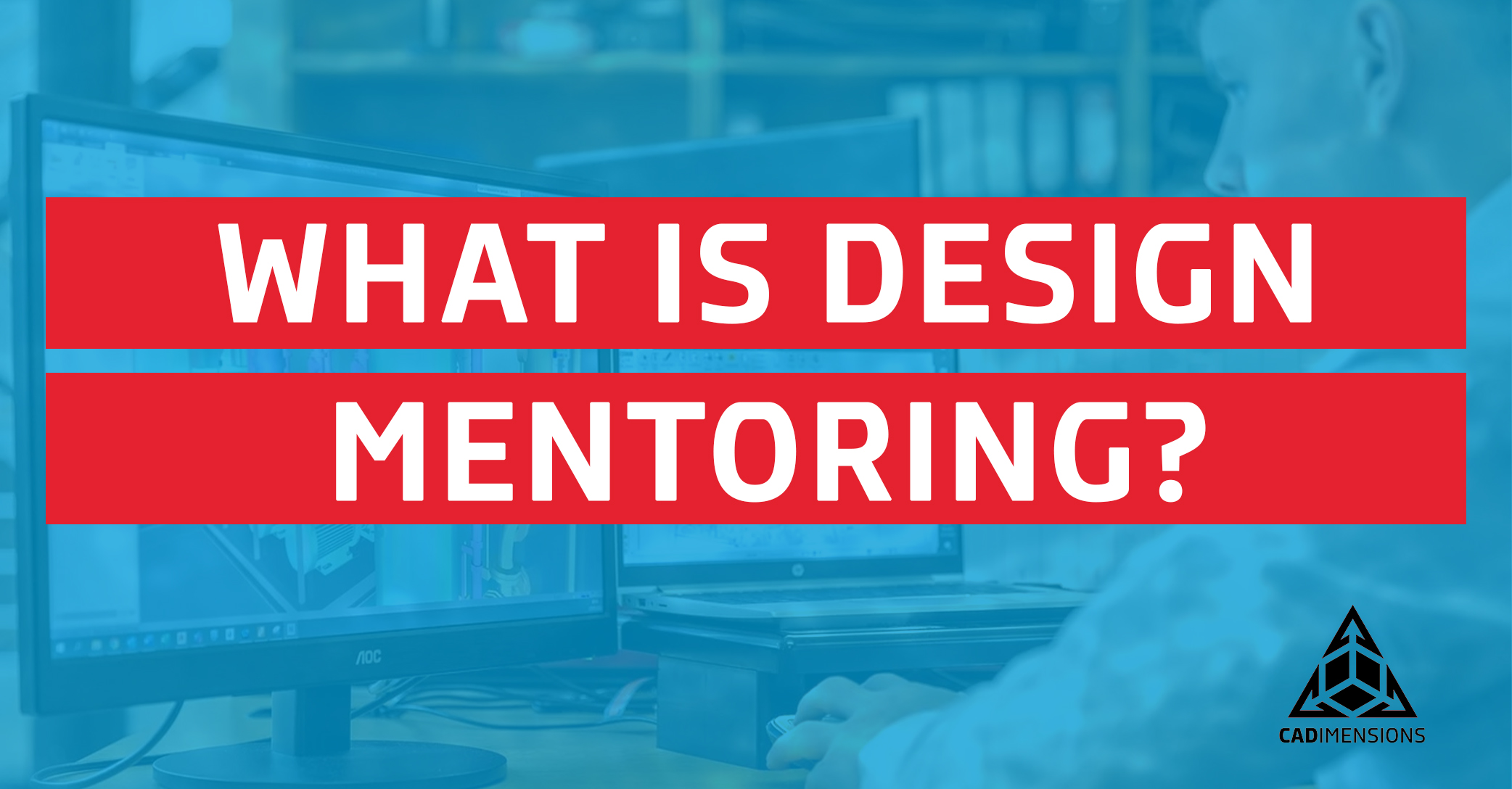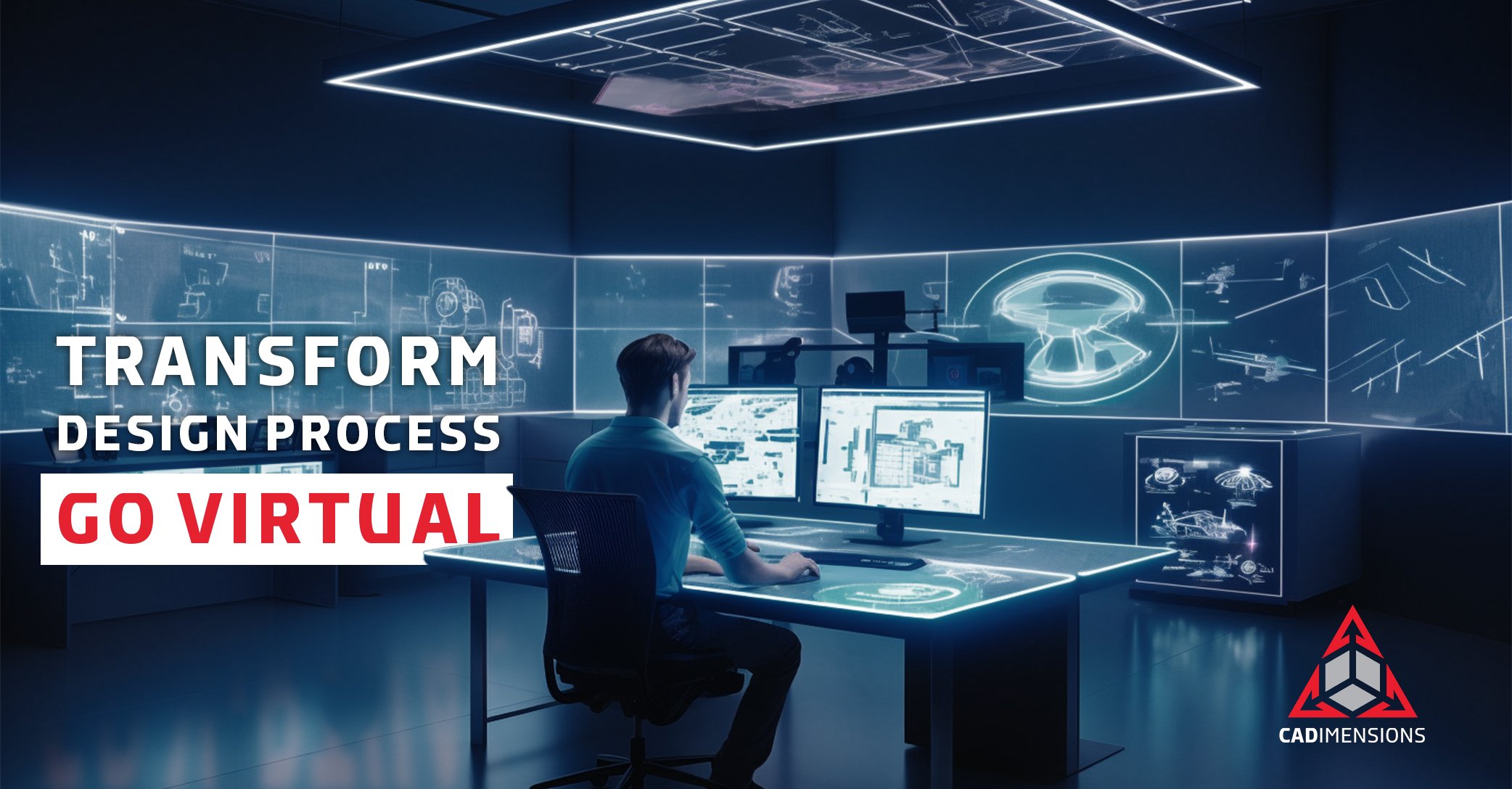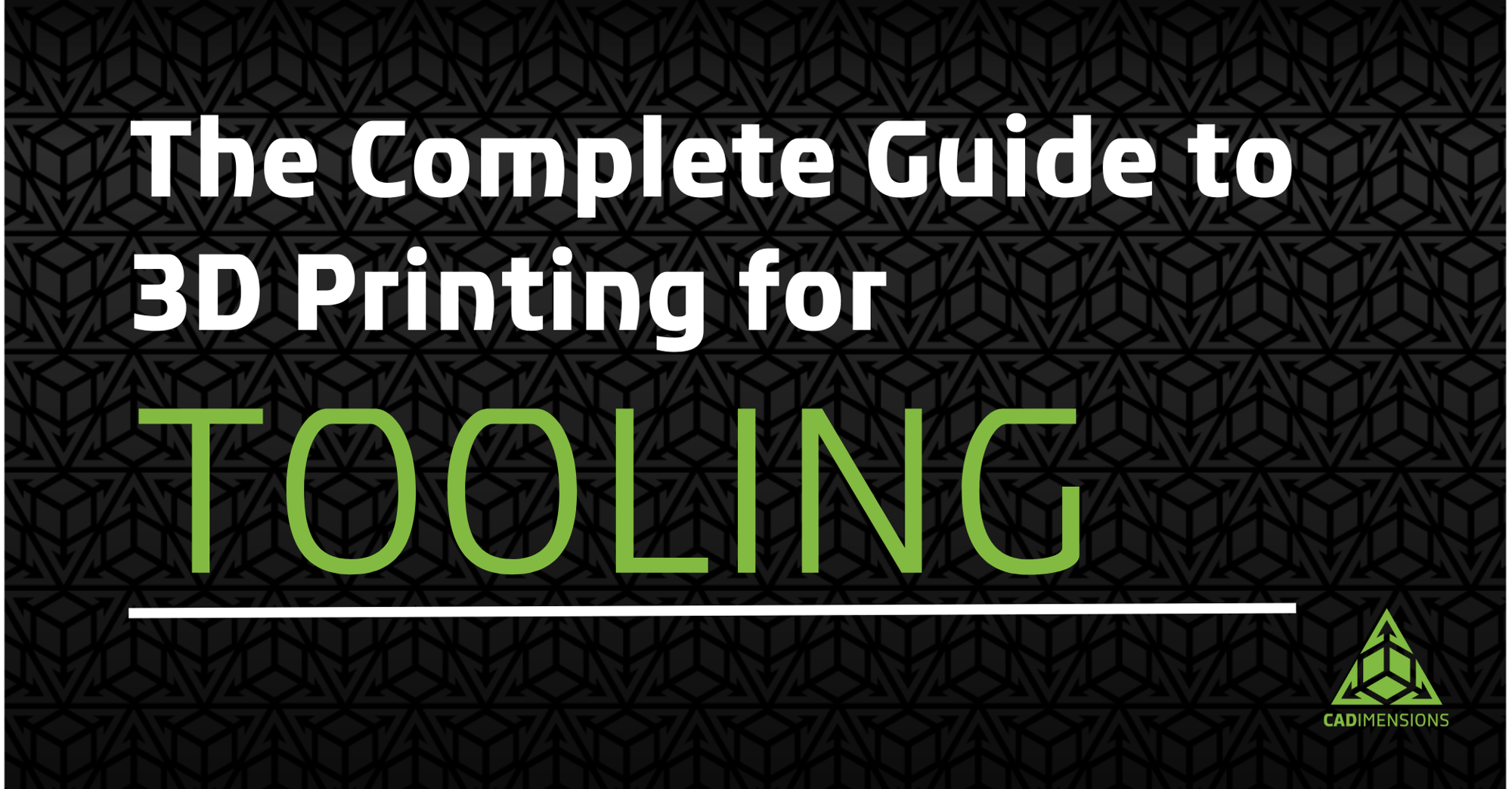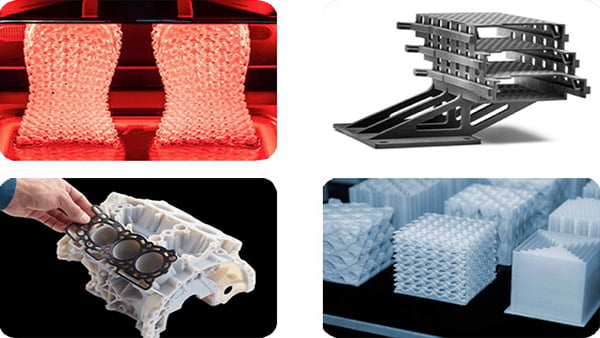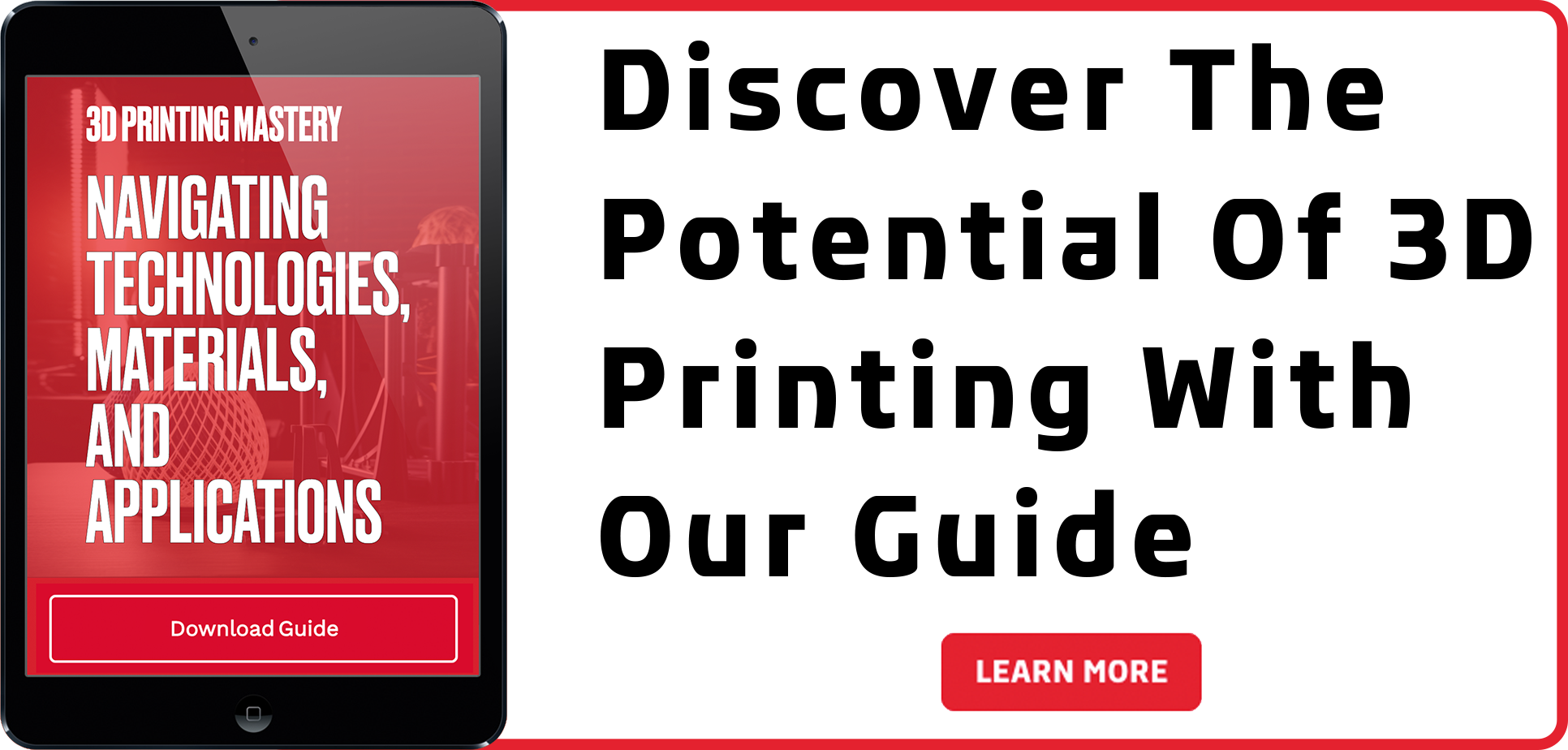What Is a Virtual Twin? Welcome To DELMIA 101
What exactly is a virtual twin? If you're working in manufacturing, logistics, or healthcare, you've probably already heard a little about this tech. If you haven't or you need to learn more about virtual twins, you're in the right place. Here we'll break down what virtual twins are, why they matter, and how platforms like DELMIAWorks are helping companies turn simulations into smarter decisions and real-world results.
Jump to: Virtual Twin | Digital vs Virtual | Manufacturing | 7 Benefits | Logistics | DELMIA | Medical | Infrastructure | Infra Benefits | Conclusion
What is a virtual twin?
Imagine being able to test, refine, and optimize your entire operation before it ever hits the real world. That’s the power of a virtual twin. Built on the 3DEXPERIENCE platform, a virtual twin is a dynamic digital replica of a real-world product, process, or system.
Simply put, a virtual twin is a digital copy of something in the real world, but it does a lot more than a basic 3D model. It lets you run detailed simulations and track performance in ways that give you a deeper understanding of potential process outcomes and help you make better decisions. Unlike static 3D models, it combines real-time data with behavior and context, enabling teams to simulate scenarios, uncover insights, and make smarter, faster decisions across the entire lifecycle.
Digital Representation vs Virtual Twin
While digital twins have brought major advances to the manufacturing world, there’s an even more powerful evolution of the concept: the virtual twin. Unlike a traditional digital twin, which is a mathematical model of a physical object or system, a virtual twin takes things further. It not only mirrors the physical object but also simulates its behavior, interactions, and evolution over time, within the context of the larger environment it operates in.
A virtual twin represents an entire system of systems. It starts with a detailed 3D model that captures the physical properties of a product or asset, then layers in data such as materials, manufacturing processes, and operational conditions. This makes it possible to simulate the real-world impact of any change—whether in design, function, or process—before making it in the physical world.
What sets virtual twins apart is their ability to evolve alongside the real product. As real-world data is continuously fed in—from performance metrics to maintenance records—the virtual twin reflects the product’s state as-designed, as-manufactured, and as-used. This ongoing feedback loop provides predictive insights, improves traceability, and enables smarter, faster decision-making.
Virtual twins can also interact with other virtual twins, enabling full system-level simulations. For example, they can simulate an entire supply chain journey—from manufacturing and packaging to delivery and product use by a customer. This holistic view helps companies understand the full lifecycle impact of every decision.
By covering everything from design and production to operation and end-of-life, virtual twins create a comprehensive digital counterpart of the physical world. They empower organizations to simulate, optimize, and innovate more sustainably—transforming industries such as Manufacturing, Logistics, Life Sciences & Healthcare, and Infrastructure & Cities.
Virtual twins bridge the gap between the digital and the physical. And through that connection, virtual worlds are improving real life.

Manufacturing
How is a virtual twin used in manufacturing?
As consumers continue to expect more personalized products and experiences, manufacturers are under growing pressure to adapt quickly—without overspending. Virtual twins offer a powerful way to meet this challenge by enabling the digital testing of new product designs, factory layouts, and production methods before any physical resources are used. With no limit other than creativity, teams can explore countless scenarios to drive innovation while meeting safety, security, and regulatory standards.
At its core, a virtual twin is a data-driven digital model that mirrors a real-world product, process, or system. It continuously pulls in live data from the physical world, making it possible to monitor performance in real time, simulate future outcomes, and optimize operations proactively. Dassault Systèmes takes this further by combining science-based modeling and simulation with real-world data to deliver predictive insights—helping manufacturers refine not just the products themselves, but the equipment and processes that bring them to life.
This approach accelerates innovation and does so sustainably. By simulating the impact of design or process changes before anything is physically built, manufacturers reduce waste, lower emissions, and shrink their overall carbon footprint.
With these advantages, more business leaders are embracing virtual twin technologies as a cornerstone of digital transformation. It’s a trend gaining global momentum: the digital twin market, valued at $7.48 billion in 2021, is expected to grow at a compound annual growth rate (CAGR) of 39.1% through 2030, according to Grand View Research.

Seven ways virtual twins can benefit manufacturing:
3D model-based simulation to represent products, assets and infrastructure
Unlimited simulation to experiment virtually and sustainably to determine the best manufacturing configuration
A closed-loop connection that allows real-time updates to refine and optimize processes for a long-term strategy continuously
Advanced manufacturing techniques and captured contextualized data for knowledge retention and added workforce agility
Augmented Reality for improved process, execution, quality, and workforce productivity and satisfaction
Model-based quality and traceability throughout manufacturing and maintenance
Cloud connectivity for global collaboration and industrial internet of things (IIot) integration
The virtual twin can add value across all phases in the manufacturing organizations and process; from planning facilities, process and manufacturing through to actual production. This starts purely in the virtual world, then once production is live, data is fed back to create a system of continuous improvement across all elements of manufacturing operations.
Augmented reality technology and interactive 3D guides human operators in complex assembly tasks, automates quality inspections and increases worker safety and satisfaction. With the connectivity and collaboration of the 3DEXPERIENCE platform, what-if scenarios can be created and optimized, including anticipating disruptions, new product launches, shifting production sourcing, and re-balancing workforce capacity.

Logistics and Workforce:
How is a virtual twin used in logistics and workforce management?
As global supply chains become more intricate, logistics leaders are turning to smarter, more flexible solutions to stay competitive. DELMIA, part of Dassault Systèmes’ 3DEXPERIENCE platform, brings the power of virtual twins to logistics and workforce management—offering real-time visibility, control, and optimization across the entire operational landscape.
In DELMIA, a virtual twin isn’t just a static digital model—it’s a dynamic, continuously updated representation of your logistics network and workforce. It mirrors everything from warehouse layouts and transport routes to staffing plans and key performance indicators. This real-time connection between the virtual and physical worlds allows organizations to simulate, analyze, and fine-tune logistics strategies without taking on real-world risk.
DELMIA supports a wide range of multi-modal logistics operations, including freight forwarding, intermodal transport, postal and express delivery, rail freight, air cargo, and trucking. Its solutions enable everything from high-level strategic planning to daily workforce scheduling, all while providing full transparency and control. This helps companies enhance delivery performance, reduce operational costs, support revenue growth, and cut down on fuel use and carbon emissions.
On the workforce side, DELMIA Workforce Scheduling offers advanced planning and employee scheduling tools. It centralizes workforce planning in a single platform, enabling organizations to build efficient, compliant schedules based on employee availability, labor laws, and shift preferences. Through a mobile app, employees can request time off, swap shifts, or set preferred working hours, empowering flexibility while maintaining operational efficiency.
In addition, DELMIA helps organizations align long-term staffing plans with projected demand, assign work orders with precision, and boost overall resource utilization. By integrating logistics and workforce planning in one platform, businesses can make faster, smarter decisions, while building a more agile and resilient supply chain.
Key Applications of DELMIA Virtual Twins in Logistics and Workforce Management:
Real-time optimization
Dynamically adjusts plans and resources using live data to maximize operational efficiency and service levels.
Scenario planning
Simulates different strategies and “what-if” scenarios to support smarter, data-driven decision-making.
Perfect fit
Ensures the right match between tasks, people, and resources based on skills, availability, and business needs.
Integrated planning
Unifies workforce, logistics, and operational planning in a single platform for better alignment and coordination.
Real-time disturbance handling
Quickly responds to unexpected events—like delays, absences, or equipment issues—to minimize disruption.
Warehouse and Distribution Center Optimization
Streamlines facility operations to improve throughput, reduce errors, and increase order fulfillment speed.
Workforce Planning and Scheduling
Creates optimized, compliant schedules that balance demand, employee preferences, and labor rules.
End-to-End Supply Chain Visibility
Provides a clear, real-time view of the entire supply chain—from planning to delivery—for better control and responsiveness.
Real-Time Performance Monitoring
Tracks key operational metrics live to identify issues early, support continuous improvement, and boost performance.
Sustainability and Cost Efficiency
Reduces waste, emissions, and operational costs by optimizing resource use and streamlining workflows.
Why DELMIA?
Unlike traditional logistics tools, DELMIA goes beyond planning—it integrates planning with execution and continuous feedback, allowing logistics and workforce teams to stay agile, aligned, and efficient in a fast-moving environment.

Medical:
How is a virtual twin used in healthcare?
Virtual twins are most commonly known for their role in manufacturing and logistics, where they help optimize products and processes before anything is physically built. But this same powerful concept is now making waves in the world of healthcare. In this context, a virtual twin is a digital model of a real person’s body—created using medical imaging, genetic data, and health records—to mirror their unique anatomy and physiology.
This personalized virtual model allows doctors to explore and test different treatment options in a simulated environment, without risk to the actual patient. For example, a surgeon could rehearse a complex procedure virtually, or an oncologist could simulate how a specific cancer treatment might affect a patient based on their biology.
As the healthcare industry shifts toward more patient-centric and data-driven care, virtual twins open the door to truly personalized medicine. They help doctors make better decisions, reduce trial-and-error in treatment planning, and improve overall outcomes. On a larger scale, hospitals and research institutions can use virtual twins to optimize workflows, streamline care delivery, and even develop new therapies more efficiently.
In short, virtual twins are transforming healthcare by combining advanced modeling with real-time patient data, bringing us closer to safer, smarter, and more effective care for every individual.
Dassault Systèmes has developed something much more than a simple model of a human body. Meet Emma Twin, the Virtual Twin for Dassault Systèmes.
Emma Twin is a highly detailed virtual model of the human body designed to simulate medical conditions and test how different treatments might work—all without putting an actual patient at risk.
This virtual patient is part of an ambitious initiative to show how virtual twin technology can be applied to healthcare. Using real medical data—like imaging, lab results, and patient history—Emma Twin helps doctors and researchers explore what’s happening inside the body, understand how diseases develop, and predict how someone might respond to a specific therapy.
For healthcare professionals, this means being able to visualize and test treatment options with greater accuracy, personalize care based on each patient’s unique biology, and even take steps to prevent illness before it starts. For patients, it means more precise diagnoses, fewer unnecessary procedures, and better health outcomes overall.
Emma Twin is much more than a simulation—she’s a glimpse into a future where care is smarter, safer, and truly personalized, powered by the same advanced modeling technologies that have long transformed industries like aerospace and manufacturing.

Infrastructure:
How is a virtual twin used in infrastructure and cities?
Now that we’re more familiar with the difference between a digital twin (a digital model that represents a real-world object or system, like a building or bridge) and virtual twins, let’s explore this concept further in how this technology can impact Infrastructure and Cities.
Ultimately, virtual twins enable organizations to go far beyond traditional planning. By simulating, testing, and optimizing ideas in a virtual environment before they become physical, companies can reduce waste, accelerate innovation, and adapt quickly to change. Once physical assets are in place and real-world data is continuously fed back into the twin, creating a closed-loop system for ongoing improvement, this concept lends itself to more broad applications.
A virtual twin not only mirrors the physical object but also includes the full system it interacts with, such as surrounding infrastructure, environmental conditions, human behavior, and even future usage patterns. In the Infrastructure & Cities sector, this means modeling everything from a single building throughout its construction and operation, to an entire city’s energy grid, water supply, and transportation network, all in one connected virtual environment.
This holistic approach is increasingly critical. Cities around the world are facing pressure from growing populations, stricter environmental regulations, and aging infrastructure. At the same time, they’re becoming more connected through data from sensors, IoT devices, and digital services. Virtual twins allow planners, engineers, and decision-makers to simulate scenarios, test ideas, and predict outcomes, all before any physical work begins. That means smarter investments, fewer mistakes, and more resilient, people-centered urban development.
For example, a virtual twin can help a city optimize traffic flow by analyzing real-time data alongside long-term planning models, or help architects improve energy efficiency by testing building designs in simulated weather conditions. All of this can happen in a virtual space, saving time, resources, and environmental impact.
Here’s how virtual twins are transforming the Infrastructure & Cities sector:
Driving innovation and collaboration in construction by connecting project teams, suppliers, and field operations in a shared virtual environment
Enabling smarter urban planning that incorporates feedback from citizens and adapts to real-time conditions
Creating more resilient and adaptive buildings that can withstand changing climates and urban demands
Reducing waste and construction defects by optimizing processes before anything is built
Helping cities meet sustainability goals by modeling and minimizing the environmental footprint of new developments
In short, virtual twins provide a powerful way to visualize and improve the world before we build it, empowering cities to grow more sustainably, efficiently, and intelligently. With this technology, we’re not just planning for the future, we’re shaping it.
Conclusion:
Dassault Systèmes solutions bridge the virtual and real worlds through the 3DEXPERIENCE platform. Our virtual twin technologies help businesses, consumers, patients and citizens address major sustainability challenges and drive innovation by:
Designing innovative, visionary models and products
Accelerating cross-team collaboration and managing product creation from planning to final release, including all developmental milestones
Simulating using digital twins to assess performance, reliability and safety during the design process
Optimizing decisions by leveraging data to improve efficiency and ensure real-time insights across the entire lifecycle
A virtual twin is both a digital replica of a product itself and of its history and evolution. Virtual twins are available to support any industry, for any need.
Virtual twins are powerful tools for advancing sustainability, empowering industries to design, simulate and optimize innovative solutions that harmonize efficiency, innovation and environmental responsibility for a more sustainable future.

